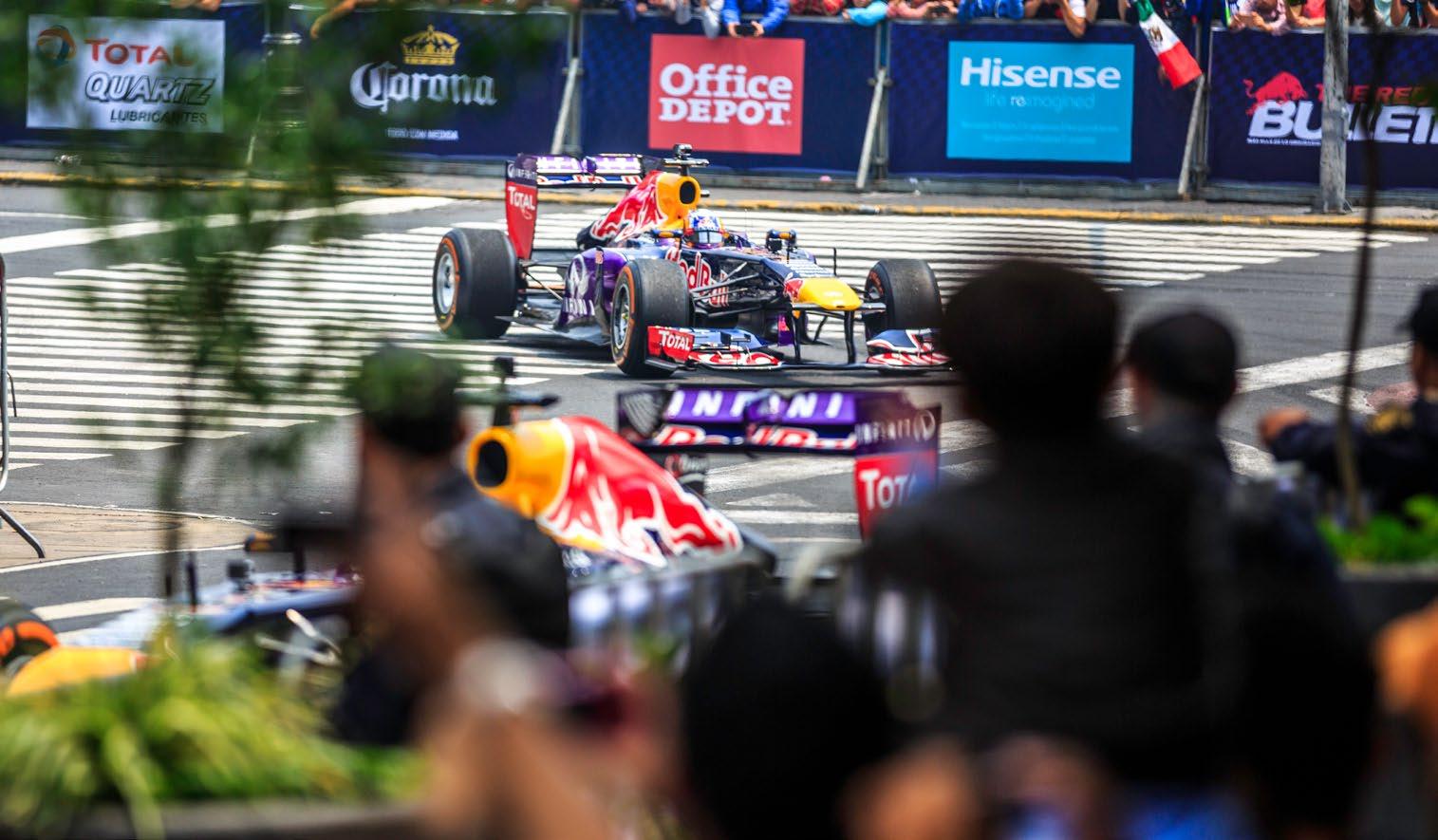
4 minute read
A MILLENNIAL’S POV
Netflix and a growing addiction to F1 racing
By Kimberly Elliot
Advertisement
Kimberly Elliot is an associate with a Toronto-based marketing agency.
Sundays in my house are a fun scene. We wake up, grab donuts and coffee, and become a heap of blankets and pillows and crumbs on the living room floor as a Formula 1 race starts up. It’s a blast. The lights go out, the cars scramble for position and our eyes peel for mistakes, collisions and overtakes through Turn One – probably the most exciting turn in the whole race. Eventually the kids get up, pick a favourite driver, race through the kitchen and turn my husband and I into pit crews. It’s a great way to enjoy a morning coffee.
I may never have found this little slice of joy in my week, if not for what might be the greatest marketing strategy I will ever admit to having influenced me. A couple of years ago, my husband and I had reached what felt like the end of Netflix. You know that feeling when you scroll through endless amounts of content only to find you’ve either watched it or have zero interest in it? Then we came across this docuseries F1: Drive to Survive. It fell into the category of zerointerest. “Next!” I blurted out. My husband ignored me and so we started Season One.
FROM NOWHERE TO SOMEWHERE, FAST
Prior to watching the series, I dismissed any claim of athleticism in racing sports. The drivers are just doing what ”us” regular folk do every day – only they’re doing it really, really (turns out – really, really,
really) fast. The sport was nowhere on my radar for ways to spend a Sunday morning. This is the genius found in the Netflix series. I went from an adamant dismissive to avid fan. Now, I’m planning yearly trips to the Canadian Grand Prix for the whole family.
When we finished the first season of the series, there was no second. Suddenly, there was an empty F1shaped hole in my heart. Thankfully, the upcoming season of actual Formula 1 was starting in mere weeks. Cue the genius strategy that drew me in and converted a passive docuseries observer to a full-blown race-day fanatic. I research track stats in places like Bahrain and Monaco, and look up a list of the hardest F1 corners. I follow up on what drivers are filling what constructor seats, read up on how qualifying works, and mark the preseason testing weekend in my calendar, all in hopes of reigning supreme over the F1 fantasy league I’ve just joined.

FALSE IMPRESSIONS
It is an understatement to say that my initial impressions of the sport were very, very wrong. The depth of the technical complexities surrounding the sport’s every aspect from the car and thermal efficiency, the driver reduction system (DRS), to the operation of the pit lane and its crews, tire regulations, tons and tons of other regulations, cornering technique – it feels like a mental exercise in physics, engineering, mechanics, aeronautics (among so many other things) – just to listen to
the broadcasters. The steering wheel alone has 25 buttons! Becoming a fan has a steep learning curve – one that I feel will last for years to come.
One of the things I love most about F1 are the drivers. You know, those guys who I said don’t require any athleticism to simply drive a car. Let me walk that back. F1 drivers may be – no, are – among the most well-conditioned and talented athletes on the planet. The physical requirement for the job is unparalleled. If you want a deep dive on the subject, I recommend Ben Auty’s exhaustive account via Bleacher Report of all the reasons why F1 drivers are some of the best athletes in the world. (It’s old but it’s good – https://bleacherreport.com/articles/30864formula-1-are-f1-drivers-considered-athletes).
GREAT PHYSICAL STRAIN
For now, I’ll summarize one part that I think says a lot about the physical strain they endure. During an average race, their bodies withstand terrifyingly high speeds of over 300 km/h and latitudinal/longitudinal g-forces of up to 5g while decelerating, 2g while accelerating and between 4g and 6g while cornering (that is from F1 dictionary.com, not my own general knowledge).
Let me put this into perspective. When cornering, if a driver decelerates at a rate of 5g, his helmet and neck support (HANS), weighing around 15 pounds, become five times that weight. He’s then carrying somewhere around 75 pounds upright, into and through the turn, focusing on the million other things he must account for in order to keep himself alive. Not alive in the race, literally alive!
I’m not here to try and convert anyone to becoming an F1 fan. I don’t harness nearly enough knowledge of the sport (check back in a few more years) and there are far more qualified people to do that. But maybe I’ll suggest a little social experiment. If you feel you have nothing to watch tonight, give Netflix’s F1: Drive to Survive a try. See if the marketing strategy works on you.

COFFEE TIME
If you don’t feel compelled to watch the upcoming race season when it starts on March 19, then you are a master of your own domain, so to speak. But if you do, grab some donuts, coffee, and expand your scientific vocabulary, while watching a host of superiour athletes risk their lives for your viewing pleasure.
Fan prediction – Charles Leclerc will unseat Lewis Hamilton as the sport’s winningest driver within the next 15 years. Stay tuned. Or don’t.










